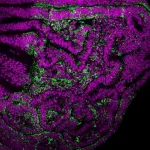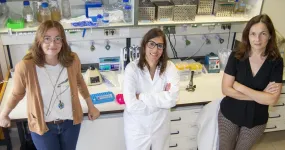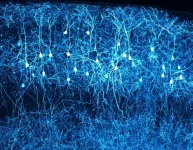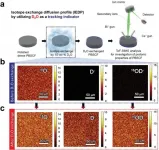Improved prediction of Indian Monsoon onset three months in advance using machine learning
The result is encouraging as the Indian monsoon might become less regular due to future global warming
2021-07-06
(Press-News.org) The onset of the Indian summer monsoon has been predicted three months ahead for the last 40 years with the highest precision up until today. The result indicates longer seasonal forecasts based on machine learning may be a way to mitigate the consequences of an erratic monsoon system under future global warming. Dr. Takahito Mitsui and Dr. Niklas Boers of the Potsdam Institute of Climate Impact Research (PIK Potsdam), Germany, published the results in Environmental Research Letters. The work is part of the European TiPES project, Coordinated from The Niels Bohr Institute, University of Copenhagen, Denmark and PIK Potsdam.
Millions of people as well as natural habitats depend on the precipitation from the Indian summer monsoon. Global warming, however, is already changing the monsoon system and will further increase the variation in precipitation patterns as well as monsoon onset and duration in the future. Seasonal forecasts might provide early warnings for farmers and others depending on the Indian monsoon to plan ahead and mitigate the consequences of interannual variabilities.
Climate scientists from PIK Potsdam, Germany now provide an improved three-month preseasonal forecast using machine learning. The predictions use data since 1948 and thus cover the climate changes of the latest decennia. The work provides a promising basis for further research toward predicting the onset of the Indian summer monsoon in the coming decades, as accelerated global warming might change the dynamics behind this monsoon system.
Comparing reconstructed data of tropospheric temperatures over the Indian Ocean and the Indian subcontinent the scientists used a shift in temperature balance between two areas to predict the monsoon onset. The resulting accuracy of +/- 4.8 days is an improvement compared to earlier attempts using traditional weather prediction models to forecast the Indian monsoon onset in a three months range.
"We can confirm with a level of optimism that it should be possible to predict the onsets of future monsoons even as global climate change accelerates in the coming decades. Indeed, our prediction method works well for the last 40 years, during which gradual global warming already has taken place," says Takahito Mitsui.
"Our study reveals the large potential of machine learning methods in forecasting climate phenomena such as the monsoon onset. Ultimately, our goal is to combine traditional weather prediction models with machine learning models such as the one proposed here, which will hopefully lead to even more skilful forecasts," says Niklas Boers.
The possibility of accurate predictions in a world with a much higher global warming, however, has not yet been investigated. The outlook for the Indian monsoon system in a changing global climate is scientifically debated. The current monsoon system might tip to a more irregular state. But it might also simply change gradually as the seasonal imbalances between the temperatures over regional landmasses and sea surfaces shift with global warming.
"We will be able to examine this with the climate model simulations under global warming scenarios. Then we will be able to answer more confidently if our method can, or cannot predict some possible failure in the Indian Monsoon system in advance," says Takahito Mitsui.
The TiPES project is an EU Horizon 2020 interdisciplinary climate science project on tipping points in the Earth system. 18 partner institutions work together in more than 10 countries. TiPES is coordinated and led by The Niels Bohr Institute at the University of Copenhagen, Denmark and the Potsdam Institute for Climate Impact Research, Germany.
The TiPES project has received funding from the European Horizon 2020 research and innovation program, grant agreement number 820970.
INFORMATION:
[Attachments] See images for this press release:

ELSE PRESS RELEASES FROM THIS DATE:
2021-07-06
BOSTON - A novel therapy recently approved by the U.S. Food and Drug Administration for patients with Alzheimer's disease amid considerable controversy should not be prescribed by physicians off-label for cerebral amyloid angiopathy (CAA), a similar cerebrovascular condition, according to Steven Greenberg, MD, PhD, director of the Hemorrhagic Stroke Research Program at Massachusetts General Hospital (MGH) and president of the International Cerebral Amyloid Angiopathy Association (ICAAA). In a letter published in The Lancet Neurology, Greenberg and eight other officers of the association wrote that there is no clinical evidence that the monoclonal antibody aducanumab is beneficial to patients with CAA, a condition in which proteins known ...
2021-07-06
Chromosomal instability is a feature of solid tumours such as carcinoma. Likewise, cellular senescence is a process that is highly related to cellular ageing and its link to cancer is becoming increasingly clear. Scientists led by ICREA researcher Dr. Marco Milán at IRB Barcelona have revealed the link between chromosomal instability and cellular senescence.
"Chromosomal instability and senescence are two characteristics common to most tumours, and yet it was not known how one related to the other. Our studies indicate that senescence may be one of the intermediate links between chromosomal alterations and cancer," says Dr. Milan, head of the Development and Growth Control laboratory at IRB Barcelona.
"The behaviour we saw in cells with chromosomal instability ...
2021-07-06
(Boston)--During neuropsychological assessments, participants complete tasks designed to study memory and thinking. Based on their performance, the participants receive a score that researchers use to evaluate how well specific domains of their cognition are functioning.
Consider, though, two participants who achieve the same score on one of these paper-and-pencil neuropsychological tests. One took 60 seconds to complete the task and was writing the entire time; the other spent three minutes, and alternated between writing answers and staring off into space. If researchers ...
2021-07-06
BOSTON -- As we age, our brains typically undergo a slow process of atrophy, causing less robust communication between various brain regions, which leads to declining memory and other cognitive functions. But a rare group of older individuals called "superagers" have been shown to learn and recall novel information as well as a 25-year-old. Investigators from Massachusetts General Hospital (MGH) have now identified the brain activity that underlies superagers' superior memory. "This is the first time we have images of the function of superagers' brains as they actively learn and remember new information," says Alexandra Touroutoglou, PhD, director of Imaging ...
2021-07-06
Scientists at the University of Leeds have developed an approach that could help in the design of a new generation of synthetic biomaterials made from proteins.
The biomaterials could eventually have applications in joint repair or wound healing as well as other fields of healthcare and food production.
But one of the fundamental challenges is to control and fine tune the way protein building blocks assemble into complex protein networks that form the basis of biomaterials.
Scientists at Leeds are investigating how changes to the structure and mechanics of individual protein building blocks - changes at the nanoscale - can alter the structure and mechanics of the biomaterial ...
2021-07-06
Two model studies document the probability of climate tipping in Earth subsystems. The findings support the urgency of restricting CO2 emissions as abrupt climate changes might be less predictable and more widespread in the climate system than anticipated. The work is part of the European TiPES project, coordinated by the University of Copenhagen, Denmark but was conducted by Professor Michael Ghil, Ecole Normale Supérieure, Paris, France and coauthours from The Royal Meteorological Institute of Belgium and Parthenope University of Naples, Italy.
Tipping could be imminent
It is often assumed climate change will proceed gradually as we increase the amounts of CO2 in ...
2021-07-06
Streptococcus pneumoniae is a major human pathogen and a leading cause of several infectious diseases including pneumonia, the third-leading cause of death in Portugal. In Europe, S. pneumoniae is the most common cause of community-acquired bacterial pneumonia in adults. Still, very little is known about its colonization within this age group. A team of researchers from ITQB NOVA has now taken a crucial step to clarify the dynamics of carriage of this bacterium in adults.
This bacterium, also known as pneumococcus, can asymptomatically colonize the human upper respiratory tract. Colonization not only precedes diseases but is also essential for transmission. Even ...
2021-07-06
In 2011, scientists confirmed a suspicion: There was a split in the local cosmos. Samples of the solar wind brought back to Earth by the Genesis mission definitively determined oxygen isotopes in the sun differ from those found on Earth, the moon and the other planets and satellites in the solar system.
Early in the solar system's history, material that would later coalesce into planets had been hit with a hefty dose of ultraviolet light, which can explain this difference. Where did it come from? Two theories emerged: Either the ultraviolet light came from our then-young sun, or it came from a large nearby star in the sun's stellar nursery.
Now, researchers from the lab of Ryan Ogliore, assistant professor of physics in Arts ...
2021-07-06
The neocortex is a layered structure of the brain in which neurons are arranged parallel to each other. This organization is critical for healthy brain function. A team of researchers from Charité - Universitätsmedizin Berlin have uncovered two key processes that direct this organization. Reporting in Science Advances*, the researchers identify one crucial factor which ensures the timely movement of neurons into their destined layer and, subsequently, their final parallel orientation within this space.
The neocortex is the outer region of the brain. It is responsible for cognitive functions such as language, decision-making, and ...
2021-07-06
A research team, led by Professor Guntae Kim in the School of Energy and Chemical Engineering at UNIST has introduced an innovative way to quantify proton kinetic properties of triple (H+/O2?/e?) conducting oxides (TCOs) being a significant indicator for characterizing the electrochemical behavior of proton and the mechanism of electrode reactions.
Layered perovskites have recently received much attention as they have been regarded as promising cathode materials for protonic ceramic fuel cells (PCFCs) that use proton conducting oxide (PCO) as an electrolyte. Therefore, quantitative characterization of the proton kinetics in TCO can be an important indicator providing a scientific ...
LAST 30 PRESS RELEASES:
[Press-News.org] Improved prediction of Indian Monsoon onset three months in advance using machine learning
The result is encouraging as the Indian monsoon might become less regular due to future global warming







